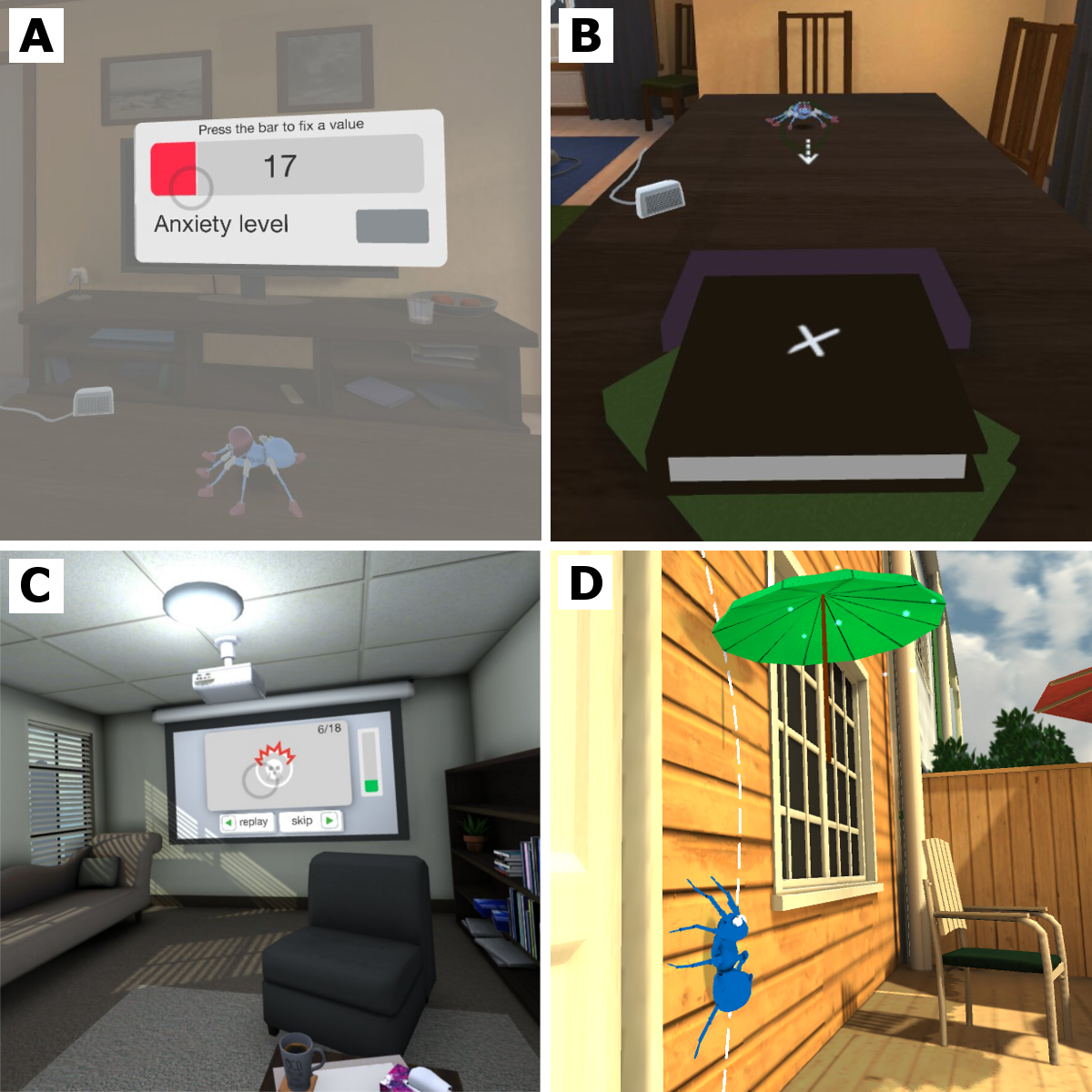Decades of research and more than 20 randomized controlled trials show that Virtual Reality exposure therapy (VRET) is effective in reducing fear and anxiety. Unfortunately, few providers or patients have had access to the costly and technical equipment previously required. Recent technological advances in the form of consumer VR systems (e.g. Oculus Rift and Samsung Gear), however, now make widespread use of VRET in clinical settings and as self-help applications possible. In this literature review, we detail the current state of VR technology and discuss important therapeutic considerations in designing self-help and clinician-led VRETs, such as platform choice, exposure progression design, inhibitory learning strategies, stimuli tailoring, gamification, virtual social learning and more.
We illustrate how these therapeutic components can be incorporated and utilized in VRET applications, taking full advantage of the unique capabilities of virtual environments, and showcase some of these features by describing the development of a consumer-ready, gamified self-help VRET application for low-cost commercially available VR hardware. We also raise and discuss challenges in the planning, development, evaluation and dissemination of VRET applications, including the need for more high-quality research. We conclude by discussing how new technology (e.g., eye-tracking) can be incorporated into future VRETs and how wide-spread use of VRET self-help applications will enable collection of naturalistic “Big Data” that promises to inform learning theory and behavioral therapy in general.
[lightbox link=”http://www.carlbring.se/wp/wp-content/uploads/2017/01/Lindner_et_al_Figure1.png” thumb=”http://www.carlbring.se/wp/wp-content/uploads/2017/01/Lindner_et_al_Figure1-1024×512.png” width=”1024″ align=”center” title=”” frame=”true” icon=”image” caption=”Over the last twenty years, consumer-level central and graphical processing units (CPUs and GPUs) have seen an exponential increase in computational power. In parallel, flat panel displays have seen a similar development in availability, size, resolution and refresh rates. A chronological, non-systematic overview of the display resolutions and diagonal field-of-view of HMD devices used in various past VRET studies (Morina et al., 2015), as well as the contemporary HTC Vive and Samsung Gear VR systems, is shown in Figure 1.”]
Over the last twenty years, consumer-level central and graphical processing units (CPUs and GPUs) have seen an exponential increase in computational power. In parallel, flat panel displays have seen a similar development in availability, size, resolution and refresh rates. A chronological, non-systematic overview of the display resolutions and diagonal field-of-view of HMD devices used in various past VRET studies (Morina et al., 2015), as well as the contemporary HTC Vive and Samsung Gear VR systems, is shown in Figure 1.
While having been researched for decades and proven efficacious for the treatment of anxiety disorders, the pending and ongoing release of consumer-targeted VR hardware platforms signals an opportune time to develop the next generation of VR exposure therapies for widespread dissemination as self-help applications and integration into regular healthcare settings. A number of key success factors for this new wave of VRETs are summarized in Table 1. In this literature review, we have discussed some of the design considerations, both technical and therapeutic, in creating and disseminating a new wave of VRETs, including how to take advantage of the unique possibilities offered by VR technology to do things not possible in and with traditional in vivo exposure therapy. Although more research is needed in several areas, we argue that this next generation of VRET has great potential to make a significant contribution to decreasing the global burden of anxiety disorders.
Read the full paper:
Lindner, P., Miloff, A., Hamilton, W., Reuterskiöld, L., Andersson, G., Powers, M., & Carlbring, P. (2017). Creating state of the art, next-generation Virtual Reality exposure therapies for anxiety disorders using consumer hardware platforms: Design considerations and future direction. Cognitive Behaviour Therapy, 46, 404-420. doi:10.1080/16506073.2017.1280843 [50 free online copies]
